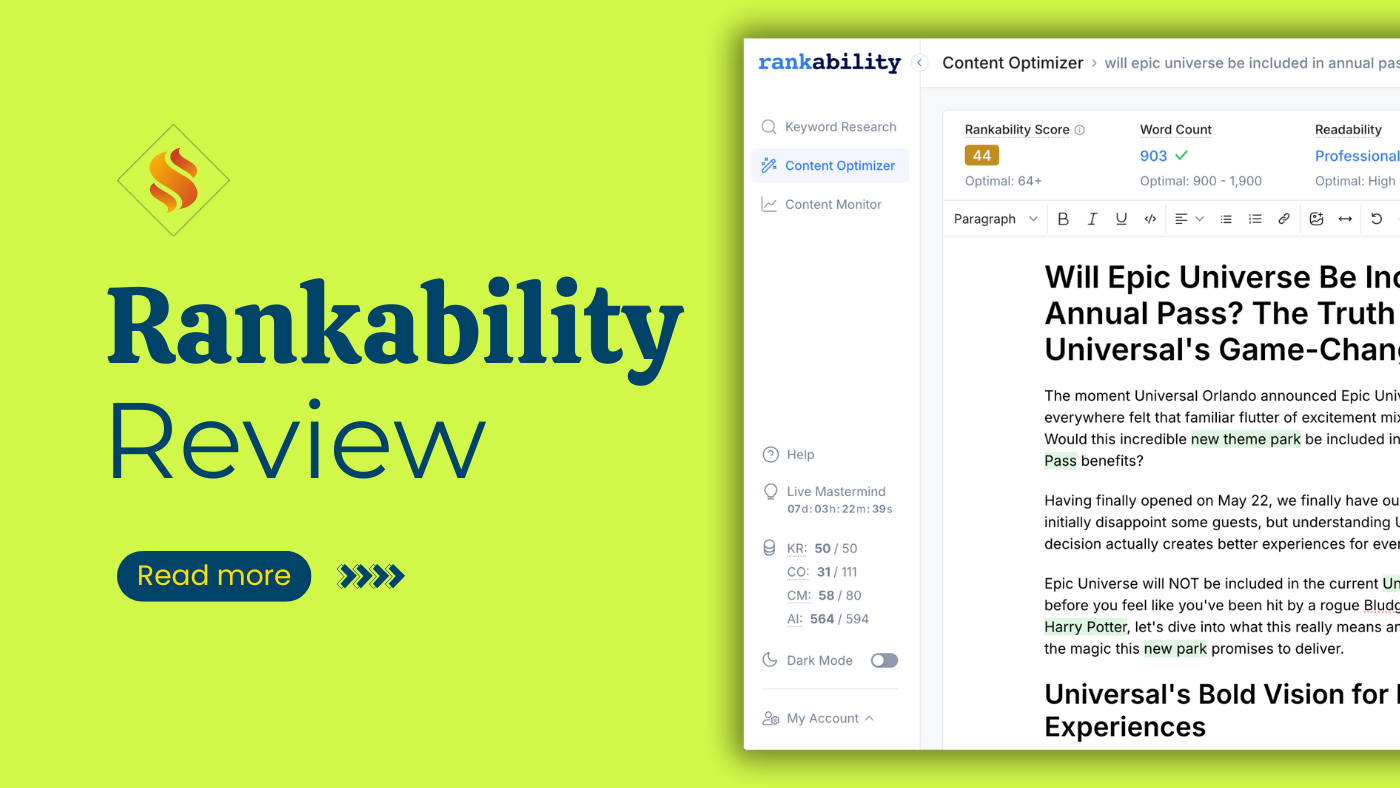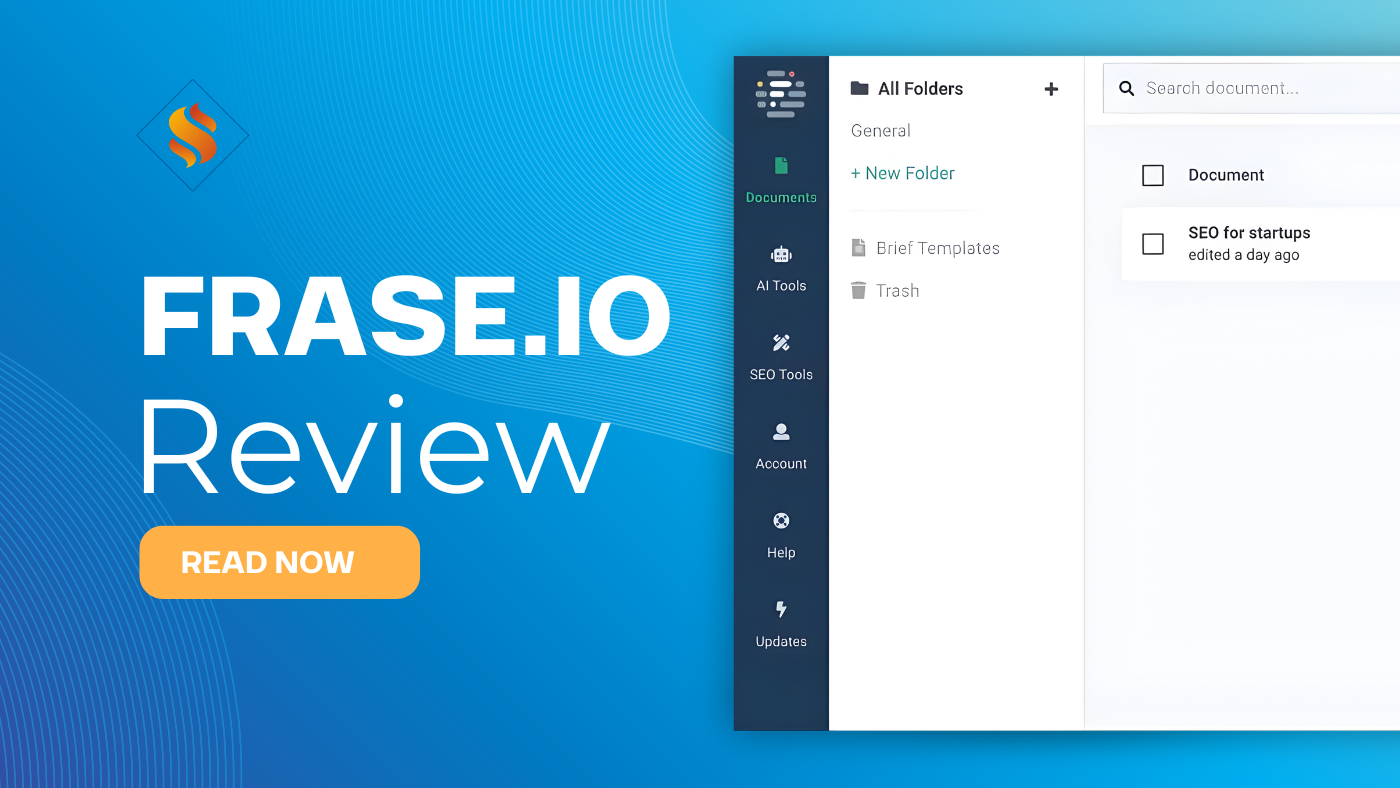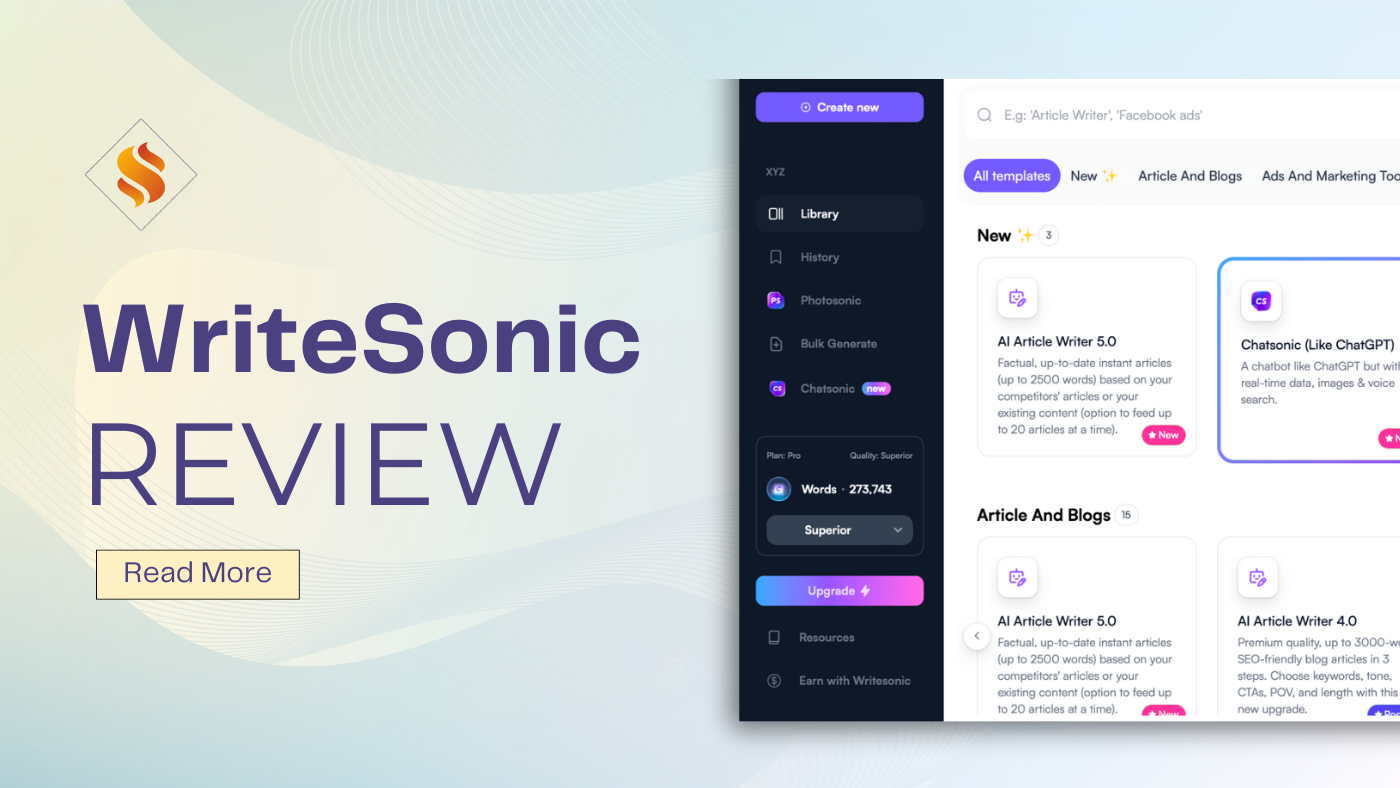Why SEO Tools for YouTube Matters in 2025: Proven YouTube SEO Tips & Strategies for Video Content
YouTube has changed from a simple video-sharing site into something much larger. It’s the second-largest search engine after Google.
Millions of creators upload YouTube content every day, and the difference between videos on YouTube buried on page 5 and those that rank in the top results often comes down to smart YouTube optimization.
One of the best ways to boost YouTube visibility is to pair creative storytelling with technical seo fundamentals.
If you’re serious about growing a YouTube channel, you need more than creativity; you need SEO tools for YouTube that help with YouTube discovery, with a keyword tool, metadata optimization, analytics, and competitor analysis.
A powerful tool stack here can help your video stand out when it comes to seo.
In 2025, the YouTube algorithm has become more dynamic, factoring in watch time, engagement rate, click-through rate, and the overall video relevance determined through metadata and viewer intent.
That’s where the best SEO Tools for YouTube come in to guide you through keyword research, video optimization, and analytics without guesswork, so people click on your video and watch your videos longer.
This guide compares the top free and paid SEO Tools for YouTube that help you find your video’s opportunities, optimize the content of your video, boost ranking visibility, and grow your channel for a successful YouTube strategy.
What Is YouTube SEO and How Does It Boost Your YouTube Channel in 2025
YouTube SEO (Search Engine Optimization for YouTube) is the practice of optimizing your videos, titles, descriptions, tags, and metadata so that your content on YouTube appears higher in YouTube search results and suggested feeds.
The YouTube algorithm rewards videos that demonstrate strong engagement signals, watch time, likes, comments, shares, and consistent click-through rates.
However, to achieve those metrics, your individual videos must first be discoverable and relevant to people watching a video like yours.
That’s where SEO Tools for YouTube step in. They analyze keywords your audience searches for, optimize your video metadata, and offer complete SEO checklists to ensure every new video upload is structured for maximum visibility.
In 2025, the algorithm update emphasizes three pillars:
- Relevance: Your title, description, and tags must match user search intent.
- Retention: Longer watch times signal quality content.
- Engagement: Comments, likes, and shares increase ranking potential.
Tools like TubeBuddy, vidIQ, and TubeRanker use AI and analytics to see which videos resonate, understand what your video needs to improve, and help YouTube creators act on data quickly.
How YouTube SEO Tools Help Optimize Your Videos: A Complete YouTube Video SEO Checklist
SEO Tools for YouTube are the backbone of modern video marketing strategies. Instead of guessing which keywords work or how to improve your metadata, these tools automate and analyze key aspects of optimization.
Here’s how they help:
1. YouTube Keyword Research Using the Right Tools for SEO Work
The foundation of YouTube SEO is knowing what your audience searches for. Tools like KeywordTool.io and vidIQ offer a tool for keyword research that shows search volume, competition level, and related search terms.
This tool is designed to turn ideas for creating videos into data-backed topics that rank. Using a focused keyword tool is one of the best ways to choose titles and topics that people already want.
Example: Typing “how to grow YouTube channel” might reveal high-intent keywords like “grow YouTube channel organically 2025” or “best YouTube SEO strategy for small channels,” which help your video target popular videos queries.
2. Tag Generation and Video Metadata Optimization (These metadata optimization steps form a crucial part of your YouTube SEO checklist and help improve search results)
Tags still matter for discoverability. YouTube tag generators create optimized lists based on your main keyword, helping you rank for multiple related queries.
TubeBuddy’s SEO Studio and RapidTags streamline this process in seconds and help YouTube surface the content of your video for related searches.
3. Optimize Video Title and Video Description for Better YouTube Search
The right title balances keyword research and click appeal. SEO tools analyze CTR history and suggest phrasing that improves performance (e.g., adding “2025 update” or power verbs like “best,” “fast,” “free”).
They also check keyword density inside descriptions and help your video earn more click on your video events during YouTube optimization.
4. Competitor Video Analysis Using the Best Free and Paid YouTube SEO Tools
Want to know why a competitor’s video ranks higher? YouTube SEO software like TubeRanker and vidIQ lets you analyze competitor tags, titles, and metadata to identify ranking gaps you can fill.
This analysis tool approach can help YouTube creators see which videos dominate a niche and what to model.
5. Analytics & Performance Tracking: Improve Your YouTube SEO Strategy
After publishing, you need a way to track progress. YouTube analytics software and rank tracking tools check how well your videos appear in search results and how often they appear in suggested feeds.
They measure views, CTR, average view duration, and keyword position shifts so you can understand what your video needs next and help your video reach popular videos status.
6. A/B Testing Titles, Thumbnails, and Tags (Testing helps refine SEO strategies and ensures your content aligns with the YouTube algorithm)
Even small changes can double views. Some tools offer A/B testing modules so you can compare which thumbnail or title attracts more clicks without risking loss in rankings.
This is a tool that allows rapid learning and can boost YouTube visibility for individual videos.
What to Look for in the Right Tools for YouTube SEO and Digital Marketing
Not every SEO tool for YouTube is created equal. Before you commit, consider the factors that affect your results and workflow for YouTube optimization and technical seo alignment.
1. Keyword Accuracy and Search Volume Depth
Accurate search volume and competition data help you prioritize topics. Tools like KeywordTool.io and Ahrefs pull data directly from YouTube suggest API to ensure authentic numbers, giving you a reliable tool for keyword research to plan creating videos people want.
2. Ease of Use and Integration with YouTube Studio
Your tool should sync with YouTube Studio to analyze real-time performance and apply suggestions as you upload, which can help YouTube surface content on YouTube more effectively.
3. Pricing and Free Versions
While free YouTube SEO tools offer basic features, paid versions provide AI analytics, rank tracking, and A/B testing. If you upload regularly, upgrading is worth it because the tool is designed to scale as you create more videos on YouTube.
4. Analytics Depth and Reporting Tools
Choose a tool with comprehensive reporting: CTR trends, keyword growth, audience demographics, and video ranking history. Deep reports help your video strategy adapt and see which videos perform best.
5. AI and Automation Features
Modern tools use AI SEO engines to recommend titles and tags automatically based on search intent and help you optimize every upload efficiently.
This saves hours and keeps the content of your video aligned with algorithmic trends so viewers watch your videos longer.
| Feature | Free Tools | Paid Tools |
|---|---|---|
| Keyword Research | ✔ Basic Data | ✔ Detailed Search Volume |
| Rank Tracking | ❌ | ✔ Daily Updates |
| AI Title Suggestions | ❌ | ✔ |
| Competitor Analysis | Limited | ✔ Deep Insights |
| A/B Testing | ❌ | ✔ Available |
Top YouTube SEO Tools in 2025 (Free & Paid): Best SEO Tools for Creators & Marketers
After testing more than 25 platforms, these are the best YouTube SEO tools worth your attention this year.
Each powerful tool below helps YouTube creators, marketers, and agencies improve keyword targeting, video optimization, and analytics accuracy.
Best Free and Paid SEO Tools for YouTube Keyword Research, Video Optimization & SEO Work
1. TubeBuddy: The Most Trusted YouTube SEO Tool for Creators
Overview
TubeBuddy remains the industry standard for YouTube SEO in 2025. Installed as a browser extension, it integrates directly with YouTube Studio to simplify every stage of optimization, from keyword research to video publishing.
It’s a tool that allows fast edits across individual videos and templates for new video uploads.
Key Features
- SEO Studio: Step-by-step checklist for optimizing titles, tags, and descriptions.
- Keyword Explorer: Search volume, competition score, and related keyword ideas from a built-in keyword tool.
- Tag Rank Tracking: Shows where your video ranks for chosen keywords.
- A/B Testing: Compare different titles, tags, and thumbnails.
- Video Analytics Dashboard: Analyze CTR, audience retention, and engagement metrics to see which videos win clicks.
Verdict:
Ideal for creators who want an all-in-one SEO Tools for YouTube channels. It is easy to use, frequently updated, and supports several languages. This makes it great for creating videos at once.
2. vidIQ: Data-Driven YouTube Analytics and Keyword Research Tool
vidIQ is known for its real-time keyword research and SEO analytics features that show how competitive a search term is on YouTube.
It also assigns a “vidIQ Score” to every keyword, a numeric indicator of ranking potential based on volume and competition, great for helping your video earn more click on your video moments.
Stand-Out Features
- Real-time YouTube keyword score with CTR tracking.
- Side-panel suggestions while uploading videos in YouTube Studio.
- Competitor analysis and channel comparisons (excellent analysis tool insights).
- Trend alerts to spot popular videos early.
Why it’s great:
vidIQ is a powerful tool that assists you in making decisions based on data. Perfect for marketers running multiple channels or clients.
3. KeywordTool.io: Keyword Research Powerhouse for YouTube Creators
KeywordTool.io extracts keyword suggestions directly from YouTube’s autocomplete data. It offers thousands of long-tail keywords you won’t find anywhere else, giving you a dedicated tool for keyword research to plan content on YouTube.
Features
- Generates hundreds of related search queries.
- Provides keyword volume and competition metrics in the Pro plan.
- Helps find your video angles and content gaps based on search intent.
- Supports Google, Bing, Amazon, and YouTube channels in one dashboard.
Best for: Creators who need deep research to guide creating videos that people actually search for.
4. Ahrefs & Semrush: Comprehensive SEO Suites with YouTube Support
Though known for Google SEO, both Ahrefs and Semrush now include YouTube data tracking.
They are perfect for marketers who want to manage video SEO and search engine optimization within one suite, aligning technical seo checks with channel health.
Key Capabilities
- Track YouTube keyword positions alongside website rankings.
- Analyze backlinks for video URLs and channel pages.
- Competitor insights and SERP visibility metrics.
- Advanced reporting and dashboard for agencies.
Verdict: Enterprise-level solutions when it comes to seo across properties.
5. TubeRanker: Specialized YouTube SEO Analyzer
TubeRanker is a dedicated platform for YouTube video analysis and SEO audits.
It focuses on on-page optimizations and competitor benchmarks so you can understand what your video is missing and help YouTube recommend it more often.
Features
- Automated video SEO audits and channel reports.
- “Tag Spy” to analyze competitor metadata.
- Keyword tracking and SEO score metrics.
- Designed for small creators and consultants seeking affordable plans.
Verdict: A strong analysis tool for tracking rankings and SEO tasks on individual videos.
6. Morningfame: YouTube Growth Analytics Simplified
Morningfame blends SEO insights with performance coaching.
It analyzes your channel data and suggests keywords and topics that fit your niche and audience size so you can plan new video ideas that help your video earn watch time.
Features
- Personalized keyword recommendations.
- Upload workflow that scores titles and tags.
- Growth analytics and engagement reports.
- Clear visual dashboards with color scoring.
Best for: Individual creators seeking step-by-step guidance to boost YouTube growth.
7. Vidooly: AI-Powered Video Analytics Suite
Vidooly offers AI-driven video intelligence that analyzes content trends across YouTube, Facebook, and Instagram.
It’s used by brands and agencies for video marketing and competitive benchmarking, and is a powerful tool when it comes to seo reporting.
Features
- AI video classification and sentiment analysis.
- Campaign performance tracking.
- Brand safety reports and creator collaboration tools.
Verdict: Perfect for large marketing teams wanting to see which videos perform by segment and watch your videos metrics at the campaign level.
8. Other Notable SEO Tools for YouTube
- RapidTags: Free YouTube tag generator for fast metadata optimization.
- Tubics: SEO checklist software that audits video content and suggests fixes for YouTube optimization.
- Noxinfluencer: Channel analysis to see which videos grow fastest.
- YTCockpit: Desktop keyword tool with real-time results, a tool that allows deeper research offline.
Free vs Paid YouTube SEO Tools: Which One Should You Choose?
| Feature | Free Tools | Paid Tools |
|---|---|---|
| Keyword Suggestions | ✔ Limited | ✔ Full database |
| Rank Tracking | ❌ | ✔ |
| AI Recommendations | ❌ | ✔ |
| Competitor Insights | Basic | ✔ Advanced |
| Reporting & Exports | Minimal | ✔ Professional |
When to use Free Tools:
If you’re a beginner learning SEO for YouTube. When the upload frequency is low (1–2 videos monthly). To test one of the best ways to gather ideas for creating videos that match search intent.
When to Upgrade to Paid Tools:
You upload weekly or manage multiple channels. You want advanced analytics and AI SEO features. You need rank tracking and A/B testing options that help YouTube recommend individual videos more often.
How to Use YouTube SEO Tools and Strategies for Better Video Ranking
Here’s a practical workflow you can follow using the best tools mentioned above.
Step 1: Keyword Research
Use vidIQ or KeywordTool.io to find keywords with balanced search volume and low competition. Focus on phrases with specific intent, such as “best AI SEO tools for YouTube” or “how to rank videos fast.” A focused keyword tool is one of the best ways to plan popular videos topics.
Step 2: Optimize Your Metadata
In TubeBuddy’s SEO Studio, insert your primary keyword in the video title, the first 100 characters of description, and tags. Ensure keywords appear naturally without stuffing, so viewers click on your video and watch your videos longer.
Step 3: Improve CTR and Watch Time
Run A/B tests on thumbnails and titles. Use vidIQ or TubeRanker to monitor CTR changes and audience retention curves, then adjust the content of your video to keep people watching a video to the end.
Step 4: Track Performance
Check ranking improvements inside the tool dashboard. Use YouTube Analytics to see how keywords impact views, impressions, and engagement for individual videos and videos on YouTube across playlists.
Step 5: Refine Based on Data
Update old videos with better titles and tags every 3–6 months. Consistency is key to sustained results, especially when it comes to seo and technical seo checks during YouTube optimization.
Best Practices for YouTube SEO in 2025
To rank higher and sustain visibility, combine tools with these practical strategies:
- Use Primary Keyword in Title and Description: Keep it within the first few words; a reliable tool for keyword research helps choose them.
- Add Clickable Thumbnails: High CTR signals strong relevance and leads to more click on your video moments.
- Use Chapters & Transcripts: They help Google understand the content of your video.
- Leverage Analytics: Track watch time, impressions, and audience demographics to see which videos connect.
- Update Old Videos: Re-optimize metadata based on fresh keyword data from your keyword tool.
- Focus on Engagement: Ask viewers to comment and like; engagement can help your video appear next to popular videos.
Common YouTube SEO Mistakes to Avoid
- Keyword Stuffing: Overuse of the same phrase hurts ranking.
- Ignoring Analytics: Skipping performance data leads to missed insights when it comes to seo decisions.
- Neglecting Thumbnails: Low CTR reduces impressions even for creating videos with great scripts.
- Using Outdated Tags: Replace them with current search terms via a tool that allows quick audits.
- Avoiding AI Tools: Modern AI engines are a powerful tool to accelerate complete seo workflows.
Comparison Table: Best YouTube SEO Tools 2025
| Tool Name | Free Version | Starting Price | Best For | Core Features |
|---|---|---|---|---|
| TubeBuddy | ✔ Yes | $3.50 /mo | Creators & Beginners | SEO Studio, Keyword Explorer, A/B Testing Titles & Tags |
| vidIQ | ✔ Yes | $7.50 /mo | Data-Driven Marketers | Real-Time Keyword Score, Trend Alerts, CTR Tracking |
| KeywordTool.io | ✔ Limited | $69 /mo | Keyword Researchers & Strategists | Autocomplete Suggestions, Search Volume & CPC Data |
| Ahrefs / Semrush | ❌ | $99 +/ mo | Agencies & SEO Professionals | Comprehensive SEO Analysis, Rank Tracking, Backlink Data |
| TubeRanker | ✔ Yes | $19 /mo | Small Channels & Consultants | SEO Audits, Tag Spy, Video Performance Reports |
| Morningfame | Free Trial | Invite Only (~$4.90 /mo) | Personal Creators | Personalized Keyword Scores, Engagement Analytics |
| Vidooly | ❌ | Custom | Agencies & Brands | AI Video Analytics, Brand Benchmarking, Campaign Reports |
Takeaway:
- If you’re starting out, TubeBuddy and vidIQ are unbeatable for everyday tasks.
- For deep research, KeywordTool.io offers reliable autocomplete data.
- Agencies and marketers should look at Ahrefs, Semrush, or Vidooly for enterprise-level insights that help YouTube recommendations.
Final Verdict: Which YouTube SEO Tool Is Best for You in 2025?
Every creator’s needs differ, so there isn’t a single universal “best” SEO tool for YouTube; it depends on your workflow, budget, and content volume.
- For Beginners & Solo Creators:
TubeBuddy Free Plan gives you essential optimization tools like keyword explorer, SEO Studio, and tag generator, perfect for learning fundamentals and launching each new video with confidence. - For Growing Channels & Digital Marketers:
vidIQ Pro delivers deeper keyword analytics, competitor benchmarking, and performance alerts to see which videos should be scaled. - For Agencies & Advanced Users:
Ahrefs or Semrush combine YouTube data with wider SEO features, offering end-to-end keyword, backlink, and rank tracking across multiple search engines and technical seo reporting. - For Data Analysis & AI-Driven Optimization:
Vidooly integrates AI SEO and video analytics, ideal for agencies that need campaign-level insights and brand safety metrics when it comes to seo across content on YouTube.
In short:
Use TubeBuddy to start, vidIQ to grow, and Ahrefs or Vidooly to scale. Each tool is designed to help your video earn more impressions and help YouTube surface it alongside popular videos.
FAQs About YouTube SEO Tools
Q.1) What is the best YouTube SEO tool for beginners?
Ans: TubeBuddy Free or vidIQ Basic plan. Both include keyword research, tags, and optimization checklists that help YouTube suggest your individual videos to the right audience.
Q.2) Are free YouTube SEO tools enough to rank videos?
Ans: Free tools cover basics like keyword research and tags, but for rank tracking and analytics, paid plans offer more value and help your video compete with popular videos.
Q.3) Which YouTube SEO tool has AI features?
Ans: Vidooly and Semrush use AI to analyze video performance and suggest content optimizations based on engagement, which can improve watching a video retention.
Q.4) How can I track my video ranking on YouTube?
Ans: Use TubeRanker or vidIQ Rank Tracker to see which videos rise for target queries and to find your video’s position over time.
Q.5) What’s the difference between TubeBuddy and vidIQ?
Ans: TubeBuddy focuses on workflow and metadata optimization, while vidIQ leans toward data analytics and competitor insights, both powerful tool options for YouTube optimization.
Q.6) How do I optimize videos for Google Search, too?
Ans: Add transcripts and schema-rich descriptions so Google understands the content of your video contextually. Include keywords in titles and file names (YouTube and Google use similar semantic cues) so users click on your video from blended results.







